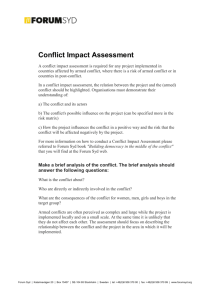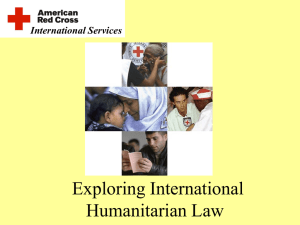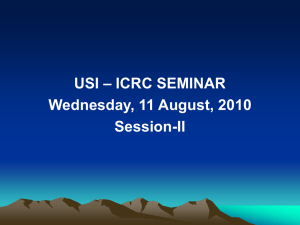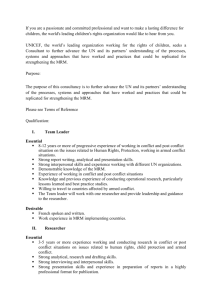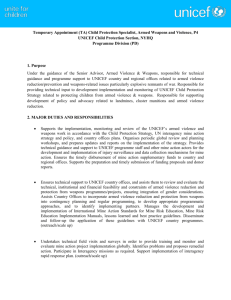United Nations International Children`s Emergency Fund Topic B
advertisement
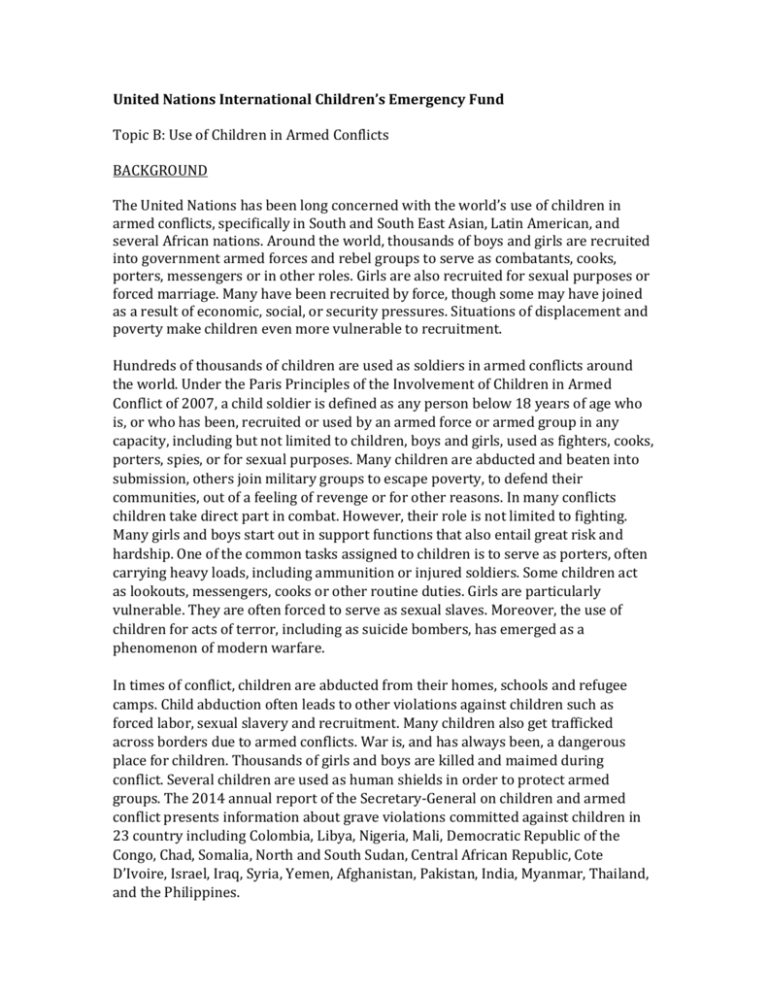
United Nations International Children’s Emergency Fund Topic B: Use of Children in Armed Conflicts BACKGROUND The United Nations has been long concerned with the world’s use of children in armed conflicts, specifically in South and South East Asian, Latin American, and several African nations. Around the world, thousands of boys and girls are recruited into government armed forces and rebel groups to serve as combatants, cooks, porters, messengers or in other roles. Girls are also recruited for sexual purposes or forced marriage. Many have been recruited by force, though some may have joined as a result of economic, social, or security pressures. Situations of displacement and poverty make children even more vulnerable to recruitment. Hundreds of thousands of children are used as soldiers in armed conflicts around the world. Under the Paris Principles of the Involvement of Children in Armed Conflict of 2007, a child soldier is defined as any person below 18 years of age who is, or who has been, recruited or used by an armed force or armed group in any capacity, including but not limited to children, boys and girls, used as fighters, cooks, porters, spies, or for sexual purposes. Many children are abducted and beaten into submission, others join military groups to escape poverty, to defend their communities, out of a feeling of revenge or for other reasons. In many conflicts children take direct part in combat. However, their role is not limited to fighting. Many girls and boys start out in support functions that also entail great risk and hardship. One of the common tasks assigned to children is to serve as porters, often carrying heavy loads, including ammunition or injured soldiers. Some children act as lookouts, messengers, cooks or other routine duties. Girls are particularly vulnerable. They are often forced to serve as sexual slaves. Moreover, the use of children for acts of terror, including as suicide bombers, has emerged as a phenomenon of modern warfare. In times of conflict, children are abducted from their homes, schools and refugee camps. Child abduction often leads to other violations against children such as forced labor, sexual slavery and recruitment. Many children also get trafficked across borders due to armed conflicts. War is, and has always been, a dangerous place for children. Thousands of girls and boys are killed and maimed during conflict. Several children are used as human shields in order to protect armed groups. The 2014 annual report of the Secretary-General on children and armed conflict presents information about grave violations committed against children in 23 country including Colombia, Libya, Nigeria, Mali, Democratic Republic of the Congo, Chad, Somalia, North and South Sudan, Central African Republic, Cote D’Ivoire, Israel, Iraq, Syria, Yemen, Afghanistan, Pakistan, India, Myanmar, Thailand, and the Philippines. PAST UN ACTION Since the creation of the United Nations, several laws have been put in place to protect children against armed conflicts. Human rights law declares 18 as the minimum legal age for recruitment and use of children in hostilities. Recruiting and using children under the age of 15 as soldiers is prohibited under international humanitarian law and is defined as a war crime by the International Criminal Court. The right to life and the prohibition of killing and maiming civilians are principles enshrined in humanitarian law, human rights treaties, and jurisprudence. Rape and other forms of sexual violence against children are human rights violations, and may amount to grave breaches of international humanitarian law. If committed as part of a widespread or systematic attack against a civilian population, sexual violence can constitute war crimes and crimes against humanity under the Rome Statute of the International Criminal Court. Abducting children against their will and the will of their adult guardians, either temporarily or permanently, is illegal under international law. It may constitute a grave breach of the Geneva Conventions and amount to a crime against humanity and a war crime. Under International Law, children are protected under the United Nations Charter, Universal Declaration of Human Rights, The Geneva Convention, The Convention on the right of the Child, Vienna Declaration and program of action, African Charter on the Rights and Welfare of the Child, Rome Statute of the international criminal court, ILO Convention 182, Convention of the Rights of the Child Protocols, A World Fit for Children, and United Nations Millennium Declaration. Under the United Nations, UNICEF works to release children from armed forces and armed groups as soon as possible even during armed conflict, and help them return to their families. In doing so, UNICEF supports services that care for the physical and mental health and well-being of such children, provide them with life skills and engage them in positive activities towards their future, including education, vocational skills and livelihoods training. The United Nations takes pride on both helping children involved in armed conflicts and protecting them under International Law. QUESTIONS TO CONSIDER 1. How can UNICEF work with countries with high incidence of children in armed conflict in order to reduce the level of children effected by war? 2. How can UNICEF work with the international community in setting an end to children involved in armed conflict? 3. How can UNICEF further improve their resources on helping children effected by armed conflict? 4. How can the United Nations prevent children from being involved in armed conflict? FURTHER INFORMATION Children in Armed Conflict http://www.unicef.org/emergencies/index_childsoldiers.html Children and Armed Conflict https://childrenandarmedconflict.un.org/ Child Protection from Violence, Exploitation, and Abuse http://www.unicef.org/protection/57929_58007.html

